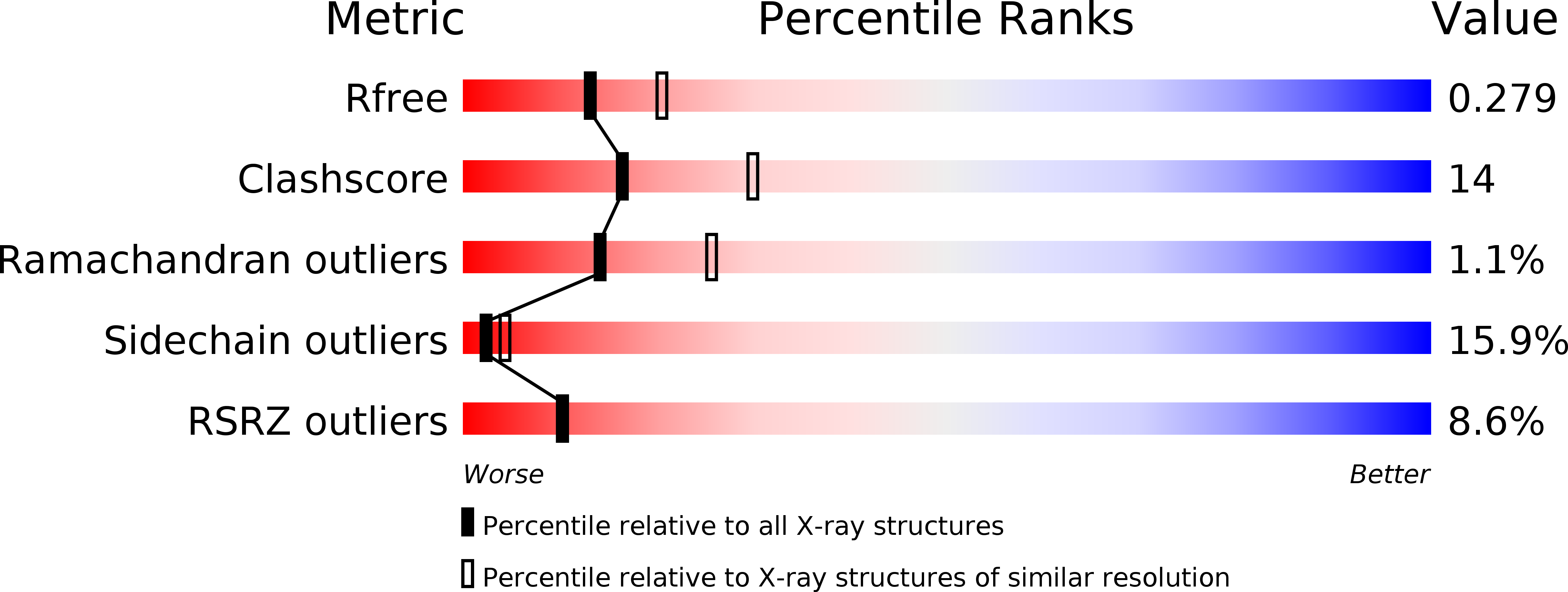Modulation of RuvB function by the mobile domain III of the Holliday junction recognition protein RuvA.
Nishino, T., Iwasaki, H., Kataoka, M., Ariyoshi, M., Fujita, T., Shinagawa, H., Morikawa, K.(2000) J Mol Biology 298: 407-416
- PubMed: 10772859
- DOI: https://doi.org/10.1006/jmbi.2000.3675
- Primary Citation of Related Structures:
1D8L - PubMed Abstract:
In prokaryotes, RuvA-RuvB complexes play a crucial role in the migration of the Holliday junction, which is a key intermediate of homologous recombination. RuvA binds to the Holliday junction and enhances the ATPase activity of RuvB required for branch migration. RuvA adopts a unique domain structure, which assembles into a tetrameric molecule. The previous mutational and proteolytic analyses suggested that mutations in a carboxyl-terminal domain (domain III) impair binding of RuvA to RuvB. In order to clarify the functional role of each domain in vitro, we established the recombinant expression systems, which allow us to analyze structural and biochemical properties of each domain separately. A small-angle X-ray scattering solution study, combined with X-ray crystallographic analyses, was applied to the tetrameric full-length RuvA and its tetrameric NH2 region (domains I and II) lacking the domain III. These results demonstrated that domain III can be completely separate from the tetrameric major core of the NH2 region and freely mobile in solution, through a remarkably flexible loop. Biochemical analyses indicated that domain III not only interacts with RuvB, but also modulates its ATPase activity. This modulation may facilitate the dynamic coupling between RuvA and RuvB during branch migration.
Organizational Affiliation:
Department of Structural Biology, Biomolecular Engineering Research Institute (BERI), 6-2-3 Furuedai, Osaka, Suita, 565-0874, Japan.


















